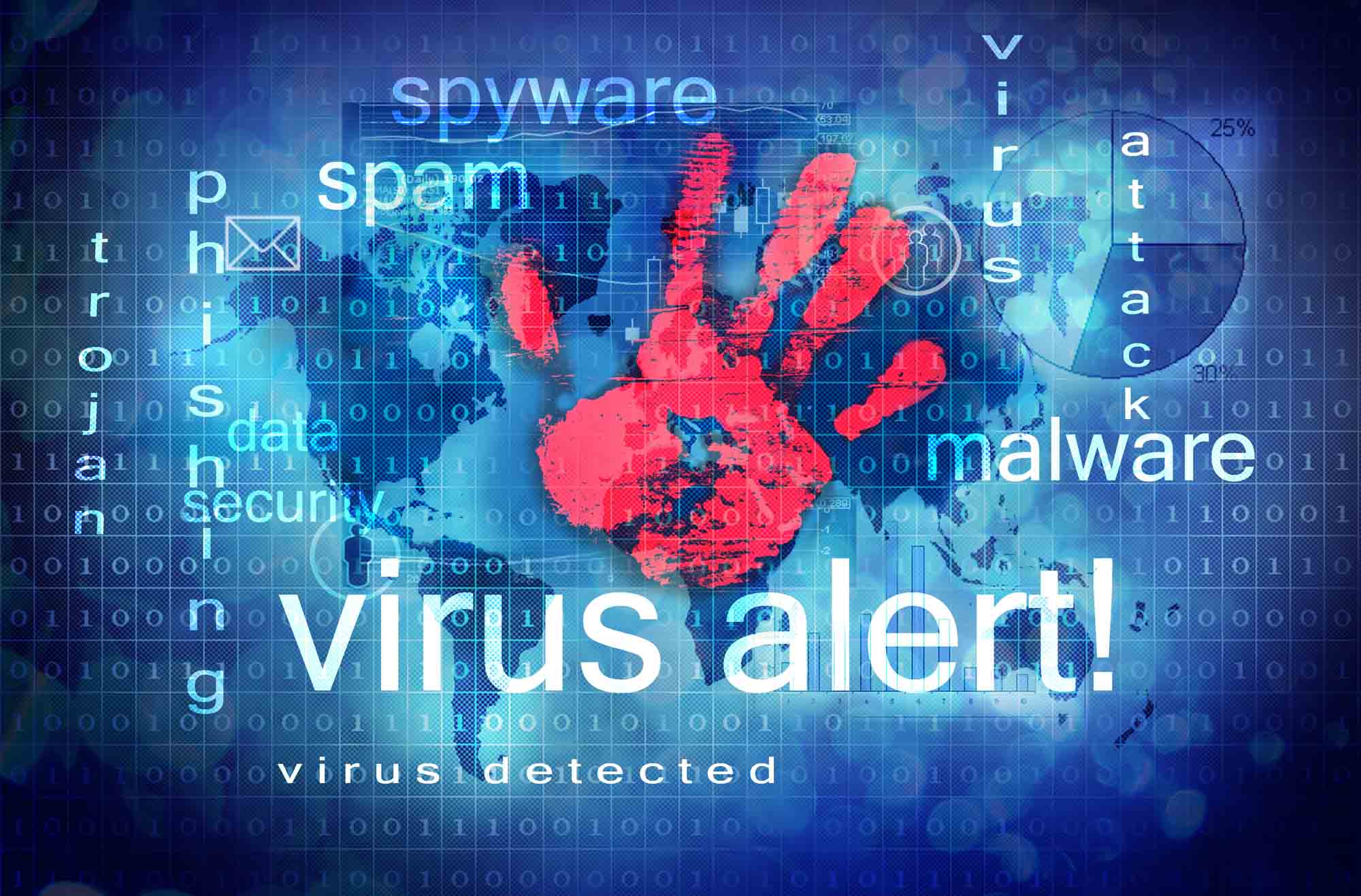In 2023, there were over 3,200 recorded major data breaches. Hackers are constantly looking for new ways to procure sensitive data, and it often only takes them seconds to find the information they’re looking for. The future isn’t as bleak as it seems, though.
There are steps you can take to help ensure your employees can recognize and combat threats to your organization. The better you educate them about network security attacks, the easier it will be for you to protect data. Let’s explore the key information you should keep in mind.
When Do Network Security Attacks Occur?
There’s no limit on when or where network security attacks can transpire. Security breaches are a looming threat that your company needs to prepare for accordingly. Otherwise, you’ll find yourself struggling to accommodate data breaches.
In many cases, this can be difficult or even impossible. Some business owners make the mistake of assuming their company is either too large or too small to serve as a lucrative target for network security attacks.
Large organizations tend to work with valuable data that’s worth overcoming safeguards to obtain. Small companies often handle plenty of info that hackers can abuse, leak, or sell, such as social security numbers or intellectual property.
As long as your network is connected to the internet, the information will be at risk of network security attacks. This is true regardless of what industry you’re in, but some are riskier than others.
Businesses in the finance, tech, and healthcare spaces are some of the most vulnerable. The information these companies work with tends to be far more valuable to hackers.
Training Your Team
To properly combat this threat, you’ll need to train your team on how to recognize the signs that something’s wrong. Doing so plays a large role in how effectively you can avoid issues in the future. Listed below are some of the most important steps to take to prevent network security attacks.
Establish a Policy for Your Organization
For example, your policy might dictate that your workers need to take cybersecurity training courses to gain the information they need. It’s imperative to always adhere to your company’s policy to maintain consistency. Researching how other companies in your industry are creating their policies to prevent network security attacks can help you make the right decisions.
Your policy will only be effective if you thoroughly research how the terms you include will impact your organization. Without the right level of research, you risk causing setbacks for your team.
Help Your Employees Understand
It’s crucial to align your employees with your goals so you can keep them on the right track. Helping them understand why data security is important will motivate them to keep your company’s data protected. You can do so by providing educational materials and holding meetings that illuminate key information.
To clarify, your workers might be unaware of how dangerous network security attacks can be. They might also have difficulty responding to threats that arise.
Provide Regular Updates
You should amend your cybersecurity policy regularly. As the cybercrime landscape changes, you’ll need to adapt in order to prevent network security attacks. It’s not uncommon for current techniques to become outdated within weeks or months.
Inform your team of these changes as soon as possible so they can make the necessary adjustments. If required, you can provide information on how to change their behavior. Not all modifications will be straightforward.
Stay Accessible
Your employees should have no issue getting in touch with you with questions or concerns about your company’s policy. They might also need you to educate them on certain topics or concepts. Regardless of what they require, it’s essential to ensure you’re there for them.
Otherwise, they could become less productive or make mistakes while working. Even a single oversight can have dire consequences.
It’s best to audit your training to prevent network security attacks multiple times per year. The last thing you want is to have your strategy become ineffective by not making the necessary changes.
Work with a Professional
Hiring a professional is one of the best ways to implement cybersecurity training. They have the tools and resources to get the results you need to prevent network security attacks.
However, not all service providers are created equal. It’s never recommended to go with the cheapest option you find. These often cut corners and won’t be able to meet your needs.
There’s a point of diminishing returns regarding what you pay. Somewhere in the middle of the price range can help you meet your goals without stretching your budget. How is their past reputation?
Always look into what previous clients have to say. There should be no shortage of positive feedback. Keep an eye out for fake reviews, though.
These are often posted in large batches and contain many of the same keywords. Pay attention to how they respond to criticism, as well.
If they get aggressive or defensive, this is a red flag you can’t ignore. They should be communicative and easy to get in touch with. If issues arise, it can be frustrating to get left in the dark.
You might also find it impossible to overcome many problems on your own. With enough vigilance, you shouldn’t have a problem finding the best choice for your needs.
Most Common Cyber Threats
Understanding the most common threats your company faces will help you prepare your team to handle them. Some are more prominent than others, and they can lead to extended downtime. Let’s explore them in detail below.
Malware
Hackers use malware like adware, spyware, and ransomware to breach a company’s defenses. Some malware is so effective that it can exfiltrate data undetected.
Ransomware, in particular, is one of the most dangerous types of malware. The FBI recommends that you don’t pay the ransom if your device is infected with this type of malware. This will help the hacker facilitate future network security attacks.
There’s also no guarantee they’ll restore access to your information. You can defend against ransomware and other types of malware by ensuring you keep your antivirus software updated. Having your team stay vigilant when looking for signs of malware will also go a long way toward keeping your data safe.
Phishing
This type of attack leverages social engineering to access sensitive information. This could involve a hacker sending a false email to one of your employees that appears to be from a legitimate source.
These messages use the same language and tone as what you’d expect to receive from the spoofed sender. It’s also not uncommon for their messages to instill urgency.
Experienced hackers can spoof messages so well that they’re virtually impossible to discern from legitimate ones. In context, an employee might receive a message that appears to be from the CFO of your company.
The message asks the recipient to click various external links and provide information so the CFO can resolve an issue. The message is designed so well that there’s no evidence it comes from a fraudulent source.
Denial-of-Service (DDoS) Attacks
These are malicious network security attacks that aim to take down a network by flooding it with false requests. This can make websites impossible to use, which can lead to catastrophic consequences for your company.
For example, consider what would happen if your company’s website was impossible to access. They’ll be liable to choose a competitor instead.
In cases like these, there’s a good chance they won’t return to your brand. These network security attacks are often difficult to block since multiple systems need to be identified before you can take action.
Insider Threats
Many cyberattacks occur from insider threats. A company’s employees tend to have access to its most important data. Some workers specifically apply to companies with the intent of procuring data.
Other people could decide to do so after a conflict at the organization. To clarify, someone who feels they were wrongfully terminated could use their access privileges to tamper with or steal information. Establishing a solid access control policy can prevent issues like these from occurring.
Code Injection Attacks
Hackers use malicious code to compromise vulnerable devices or networks with code injection attacks. These often take a few moments to complete and can be difficult to recognize without the right systems in place.
You’ll need to make use of automatic detection tools to determine when malicious changes have been made. Keep in mind that recognizing code injection is only half the battle. Your team should know how to handle incidents like these so they can minimize the impact they have.
Left unchecked, code injection network security attacks can be one of the worst types of threats to deal with. If hackers exploit the right vulnerabilities, they’ll have free reign to do what they want.
Take Action ASAP
The sooner you take action, the more efficiently you can keep your organization safe from network security attacks. The information in this guide will help ensure you get started on the right track and avoid issues you may have otherwise encountered.
Vertical IT Solutions owns its IT infrastructure, which allows us to develop customized plans for our clients. We strive to exceed all expectations and deliver outstanding results that take your business to new heights. You’ll learn more about how we can help when you schedule a free consultation today.



